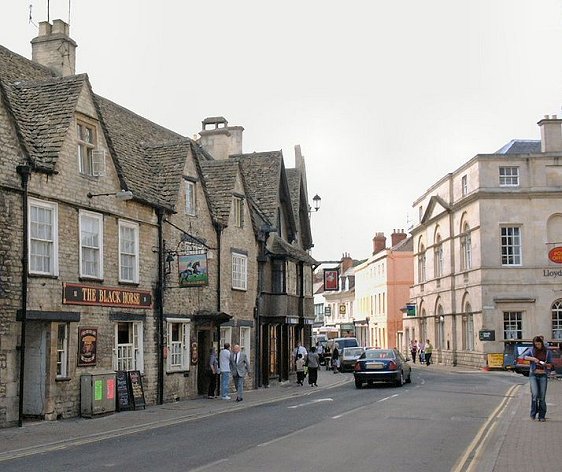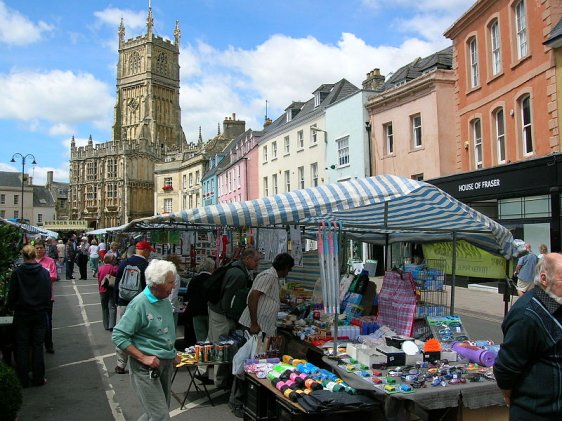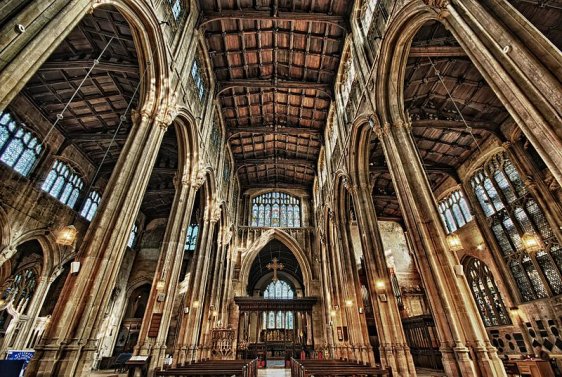 Cirencester, Gloucestershire, England: Source: https://commons.wikimedia.org/wiki/File:Castle_Street_Cirencester_30th_Aug_2001.jpg
Cirencester, Gloucestershire, England: Source: https://commons.wikimedia.org/wiki/File:Castle_Street_Cirencester_30th_Aug_2001.jpgAuthor: Chris Jefferies

Cirencester is a market town in Cotswold district, in Gloucestershire, England. The town is located by the banks of the River Churn, which continues into the River Thames. With a population of 19,000 people (2012 estimate), it is the largest town in Cotswold district.
Cirencester comprises the town center and four neighborhoods namely Chesterton, Stratton, Watermoor and The Beeches. To the southwest of Cirencester, and almost contiguous to Watermoor is the village of Siddington.
Cirencester was a significant settlement during the Roman era, on par with St Albans and Colchester. The Romans built a fortification here to defend the cross of the Churn at Fosse Way. A town developed around the Roman fort thriving on the wool trade. Today remains of Roman constructions have been uncovered, among them the amphitheater, villas, forum and basilica.
 Street market in Cirencester: Source: https://commons.wikimedia.org/wiki/File:Cirencester,_market_place_.jpg
Street market in Cirencester: Source: https://commons.wikimedia.org/wiki/File:Cirencester,_market_place_.jpgAuthor: Tony Grist

Following Norman Conquest, King Henry I established Cirencester Abbey in 1117. The abbey church was only completed in 1176. From the 12th and into the 15th century, the people of Cirencester pressed for their town to enjoy its borough status, with its accompanying rights and privileges, against claims of the abbot.
Cirencester Abbey suffered total demolition under the Dissolution of the Monasteries ordered by King Henry VIII in 1539. Today only the Norman Arch is still standing.
During the English Civil War, the people of Cirencester was divided, with the townsfolk supporting the Parliamentarians while the gentry and clergy supported the Royalists. On 11 September 1651, King Charles II spent a night in Cirencester, during his escape following the Battle of Worcester, on his way to France.
Today Cirencester is a charming town. It benefited from the patronage of the Bathurst family, becoming a center for the Arts and Crafts Movement, and home to the workshops of furniture designer Ernest Gimson.
 Interior view of St John the Baptist Church in Cirencester: Source: https://commons.wikimedia.org/wiki/File:St_John_the_Baptist_church_-_Cirencester.jpg
Interior view of St John the Baptist Church in Cirencester: Source: https://commons.wikimedia.org/wiki/File:St_John_the_Baptist_church_-_Cirencester.jpgAuthor: Daniel 2005

Visiting Cirencester
From London, take the M4 motorway heading west. Leave the motorway at Junction 15, and continue north on the A419 road until you reach Cirencester.Places of Interest in Cirencester
- Church of St John the Baptist: Anglican parish church in Cirencester.
- Roman Amphitheater: Ruins of a Roman amphitheater on Cotswold Avenue.
- St Peter's Church: Roman Catholic church built in 1895.
 Latest updates on Penang Travel Tips
Latest updates on Penang Travel Tips

Copyright © 2003-2025 Timothy Tye. All Rights Reserved.

 Go Back
Go Back